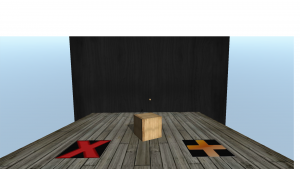Haptics in Education
- Digital Touch at a distance.
The field of design is a difficult discipline to facilitate at a distance due to the practical nature of what is known as “studio” or “in house” practice. Introducing haptics to distance learning, with particular reference to the discipline of design and the future of online applied learning, has become the center of my PhD studies.
As human beings, we can interact with our environment through the sense of touch, which helps us to build an understanding of objects and events. The implications of touch for cognition are recognized by many educators who advocate the use of “hands-on” instruction (Minogue, 2006)
- Creative virtual distance learning
The discipline of design is a challenging field to teach via distance learning as it can encounter restrictions in providing alternatives to actual ‘hands on’ studio practice. Restrictions could be said to include the use of equipment and resistant materials1, workshop demonstrations etc.., all of which have been classically proven to add value to students’ attainment of modelling and crafting skills. The addition of haptic tooling will afford HE level design students a third sense; touch augmentation to a standard computer aided design platform. To that end this study has been accepted by one of the biggest distance learning institutes in the UK/Europe The Open University (OU), Milton Keynes. The provision of touch tooling for distance learning has been acknowledged as a novel addition to future technology. The tooling system will be tested further and results disseminated within the field of teaching and future technologies.
To alleviate the onus on materials, The Open University design syllabus presently focuses on design theory and creative thinking, and allows cross platform media space for students to analyze and question design products, services and systems. Ultimately the majority of distance learning HE students’ curriculum is dominated by visual and audio stimulus and lacks touch explorations of objects or construction of objects. The knock on effect of audio and visual led design programs could be that graduating students have gaps in their practice, as they may have little scope to tie their knowledge to their hands on practice.
- Haptics and creative practice
Haptic technologies use actuators to apply force feedback to the skin, allowing the user a direct contact with force feedback to the skin. This can be interpreted as ‘real’ world touch contact with physical objects, which occurs when the user is exposed to a visual object in parallel to active touch. Users can be afforded different force types to allow interpretation of different surface types e.g. a smooth flat plane, a soft surface or ‘sticky’ surface etc…
The ‘eSTEeM’ project focuses on resolving some of the issues of facilitating physical prototype crafting for novice designers studying within a virtual learning environment (VLE). The research proposes the use of a haptic tooling set within the first cycle of the design development process where typically learners are shown to be more inclined to explore via hands on learning. Students will interact with objects via a specific haptic tool (chosen Geomagic Touch™ – a single point of contact device), which will work in conjunction with a CAD inspired interface and use a minimal selection of 3D virtual shapes.
Working from a set ‘brief’, design students in the second and third year of HE distance study, will be requested to interact with 3D shapes via the haptic tool and engage with the development of their prototype via touch exploration. We hope to highlight, via the eSTEeM project, that distance learners can be afforded active touch exploration via a haptic device and that this will enhance a learner’s practical understanding of a shape in the third dimension, encouraging an understanding of Bricolage. A successful conclusion will show that students can use the haptic device successfully, as a tool to develop their design thinking in the third dimension at a distance. The overall intervention will allow better integration of real world design making skills in preparation for the real world and increased employability to the field of design.
References
Minogue, 2006. Haptics in Education: Exploring an untapped sensory modality. Review of Education research, 76(3), pp. 317-348.


Leave a Reply